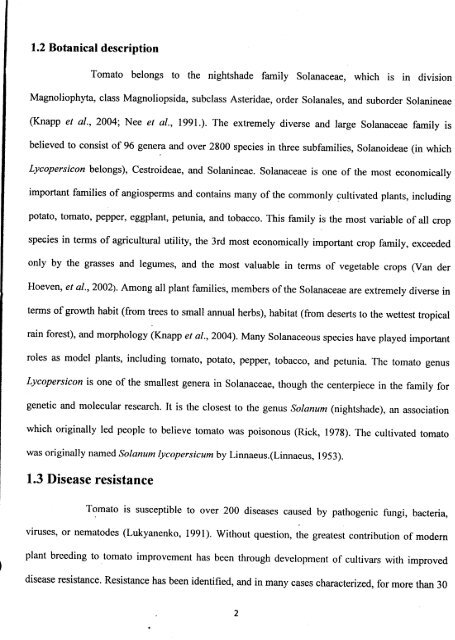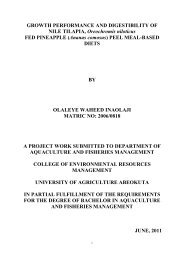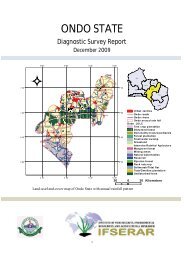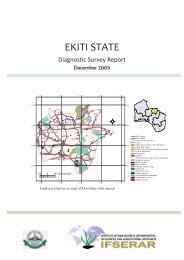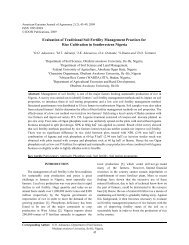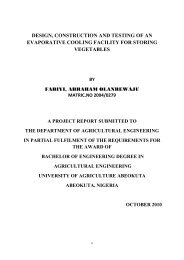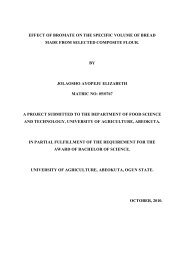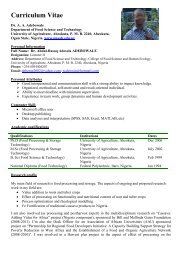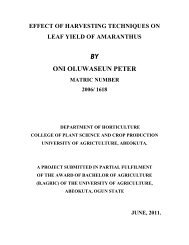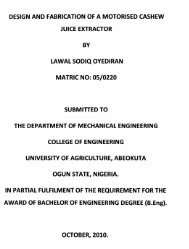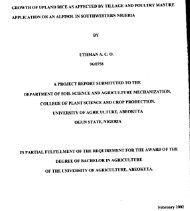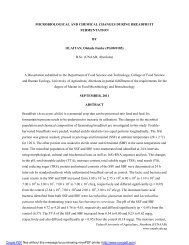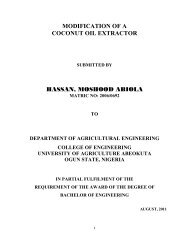SCREENING OF TOMATO ACCESSIONS FOR RESISTANCE TO ...
SCREENING OF TOMATO ACCESSIONS FOR RESISTANCE TO ...
SCREENING OF TOMATO ACCESSIONS FOR RESISTANCE TO ...
You also want an ePaper? Increase the reach of your titles
YUMPU automatically turns print PDFs into web optimized ePapers that Google loves.
1.2 Botanical description<br />
Tomato belongs to the nightshade family Solanaceae, which is in division<br />
Magnoliophyta, class Magnoliopsida, subclass Asteridae, order Solanales, and suborder Solanineae<br />
(Knapp et al., 2004; Nee et al., 1991.). The extremely diverse and large Solanaceae family is<br />
believed to consist of 96 genera and over 2800 species in three subfamilies, Solanoideae (in which<br />
Lycopersicon belongs), Cestroideae, and Solanineae. Solanaceae is one of the most economically<br />
important families of angiosperms and contains many of the commonly ~ultivated plants, including<br />
potato, tomato, pepper, eggplant, petunia, and tobacco. This family is the most variable of all crop<br />
species in terms of agricultural utility, the 3rd most economically important crop family, exceeded<br />
only by the grasses and legumes, and the most valuable in terms of vegetable crops (Vander<br />
Hoeven, et al., 2002). Among all plant families, members of the Solanaceae are extremely diverse in<br />
terms of growth habit (from trees to small annual herbs), habitat (from deserts to the wettest tropical<br />
rain forest), and morphology (Knapp et al., 2004). Many Solanaceous species have played important<br />
roles as model plants, including tomato, potato, pepper, tobacco, and petunia. The tomato genus<br />
Lycopersicon is one of the smallest genera in Solanaceae, though the centerpiece in the family for<br />
genetic and molecular research. It is the closest to the genus Solanum (nightshade), an association<br />
which originally led people to believe tomato was poisonous (Rick, 1978). The cultivated tomato<br />
was originally named Solanum Iycopersicum by Linnaeus.(Linnaeus, 1953).<br />
Tomato is susceptible to over 200 diseases caused by pathogenic fungi, bacteria,<br />
viruses, or nematodes (Lukyanenko, 1991). Without question, the greatest contribution of modem<br />
plant breeding to tomato improvement has been through development of cultivars with improved<br />
disease resistance. Resistance has been identified, and in many cases characterized, for more than 30


